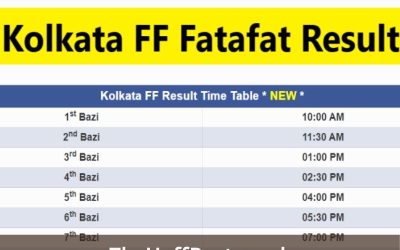What Are the Features of Technical Communication?

Technical communication is about making information and knowledge accessible to a wide range of audiences, including those who work in business, industry, healthcare professions, and research settings.
It includes a number of different skills, such as technical writing and editing, coding, user experience & web design, audience analysis, content development, and data analysis & visualization. It also focuses on creating documents that are appropriate for the needs of an audience, regardless of linguistic or cultural contexts.
Also Read: Samsung fastcompany jaeyeon jung galaxy smartthings
User-centered design
The user-centered design process begins with a thorough understanding of the people who will be using a product. This involves conducting extensive research into user requirements, motivations and mental models.
This is done through the use of various methods such as interviews, focus groups and surveys. The user-centered design approach also relies on empathy and a strong understanding of the environment in which the users will be using the product.
Ultimately, it is the user who will determine the outcome of the design process. A user-centered approach ensures that the user is given the most important aspects of a product and that all design decisions are made with them in mind.
In the technical communication field, user-centered design is often applied to documents such as manuals, documentation or instructional materials. This requires a detailed knowledge of the target audience’s motivation, habits, preferences, cultural context, technological capacities and physical capabilities.
As a result, there are certain language and writing styles that should be used in order to make the text easy to read and understand. This is particularly true for informational texts, which should not contain jargon or excessive features of technical communication are.
User-centered design also aims to make sure that all content is accessible and legible for its readers. For example, it is a good idea to add images and videos when possible in order to help users better understand the content they are reading.
This will allow them to get more out of their reading and ensure that the reader’s experience is positive. Moreover, it will allow for the creation of user-friendly designs and tools that are easily usable by all kinds of different users.
The user-centered design process is a highly iterative process that requires a constant back-and-forth between the product and the users. It is a process that requires constant testing and analysis, as it is not always possible to create a perfect product without user feedback.
The user-centered design process can be a difficult one to master, and obtaining the right data is essential in order to make any successful decisions. This can be accomplished through different methods such as focus groups, surveys or questionnaires.
Audience type
Audience analysis is the process of identifying your intended audience and assessing their needs, interests, and level of knowledge in the subject so you can tailor your writing to meet them. The information you gather directly influences your document, the way you write, how much and what kind of information to provide, etc.
When you’re a technical communicator, you often have to write for multiple audiences. You may have a primary and secondary audience, for example, someone who needs to read your report and another who might need to look at it later.
Your primary audience includes people who are directly involved in the situation that your document is designed to address. The secondary audience is those who aren’t direct participants but who can be expected to need to read your document at some point, such as technicians or experts. The tertiary audience is those who might not be directly involved but might be interested in reading your document, such as journalists, shareholders, or the public.
These four main groups of readers can make it easier for you to write for each of them, so consider them carefully. They have different levels of knowledge, which can influence the language and structure you use to explain your product.
For experts, for example, a document that is written with features of technical communication are terms and jargon might be less easy to read than one that uses plain English. It will also take longer to read, so you’ll need to include more graphics and shorter paragraphs to make it more accessible.
On the other hand, a nonspecialist reader might be able to follow a highly technical document without problem. But they may not know the technical terms or jargon, so you will want to avoid using them too much.
Adding examples can be especially useful for this audience. They can help you illustrate the points you are making, and they can be a great tool for showing your nonspecialist readers how a particular process works.
When you are trying to communicate a complex process, you’ll need to use examples to show how it works. This is especially true when you’re a technical writer who is trying to convey the information in a way that is understandable for nonspecialists.
Formatting and appropriate language
In features of technical communication are, documents must be formatted in a way that helps the reader extract the information they are seeking. This includes using readable type face and font, structure such as tables and lists, and clearly labelled links.
Formatting also involves using language that is appropriate for the specific writing situation, such as avoiding jargon or slang. It may include specialized terminology, abbreviations, and equations, as well as images and graphics (tables, graphs, figures).
When formatting a document, the writer must ensure that the text is readable on any media. This may mean making adjustments to the font size and typeface, margins, line spacing, and paragraph length.
Likewise, the writer must use language that is appropriate for the audience and purpose. This means avoiding jargon and slang, as well as words that are outdated or euphemistic.
The writing must be objective and professional, unless the purpose of the writing is to express a personal point of view. This includes avoiding condescending or diminutive terms (such as “girl”) and using words that indicate a person’s age (e.g., “senior”).
This is particularly important for women who are addressing men in their writing or communications. These choices are inappropriate in part because they indicate that a woman is less equal than a man.
Other features of the written word that are not appropriate for technical communication are obscene, profane, vulgar, rude, disrespectful, threatening or inflammatory language; harassment; personal attacks; and false or defamatory material about a person or organization.
These behaviors are not only unacceptable in the business world, but are also violations of the law. If you see any of these behaviors, report them to your supervisor or an ethics officer.
In addition, you should avoid writing that is imprecise, illogical or uninformed. It is a good idea to check with your writing center or instructors for advice on what to write, when to use it, and how to format it.
Ultimately, the goal of technical communication is to make complex information accessible and useful to a reader. In this way, technical writers help their readers understand and solve problems or compel them to take action.
Globalization
Globalization is the process by which people, goods, ideas, and technology travel throughout the world. This movement has a positive effect on business, but it can also have negative effects on society and the environment.
In the world of technical communication, globalization means that we can communicate with partners in other countries and negotiate international contracts more quickly than ever before thanks to the Internet. This can make it easier for companies to find new customers or sell products to more people.
It can also help a company to be more socially responsible. For example, when a multinational corporation buys coffee from farmers in Rwanda, they are helping those farmers earn a living and contributing to the local economy.
There are also many positive aspects of globalization that can benefit the whole world. For example, it allows us to access foreign culture, including food, music, and movies.
The term “globalization” comes from the Latin word globalis, which means “all over the place.” It is a way to describe the movement of goods, people, and information across borders. The process has evolved from the early days of human civilization when trade, transportation, and communication made it possible to spread knowledge, ideas, and goods from one part of the world to another.
For instance, the Roman Empire spread its economic and governing systems to large portions of the world for centuries. Later, the Silk Road trade routes brought merchants and travelers from China to Europe and other parts of Asia.
In modern times, globalization has led to economic prosperity and political stability around the world. However, it can also cause environmental problems and heightened disease risks.
Some critics of globalization see it as an unfair system that rewards a select few while ignoring the needs of the rest of the world. This is especially true when it comes to trade and the flow of capital.
The positive and negative effects of globalization are debated and discussed throughout history. However, many believe that it is necessary for the world to continue progressing in this way.










